Hello, dear readers! Have you ever come across those tiny, beautifully detailed metal figurines that almost seem alive with stories? That’s the magic of Dokra craft, one of India’s oldest art forms, known for its rustic charm and timeless appeal.
Traditionally, Dokra has been used to create tribal figurines, ornaments, and ritual pieces, each carrying centuries of heritage in its design. But today, this ancient craft has found a surprising new canvas—mobile charms!
In every curve and motif, you’ll find echoes of tribal traditions, beliefs, and creativity. Let’s take a journey into how this age-old art form is being reimagined for today’s pocket-sized world.
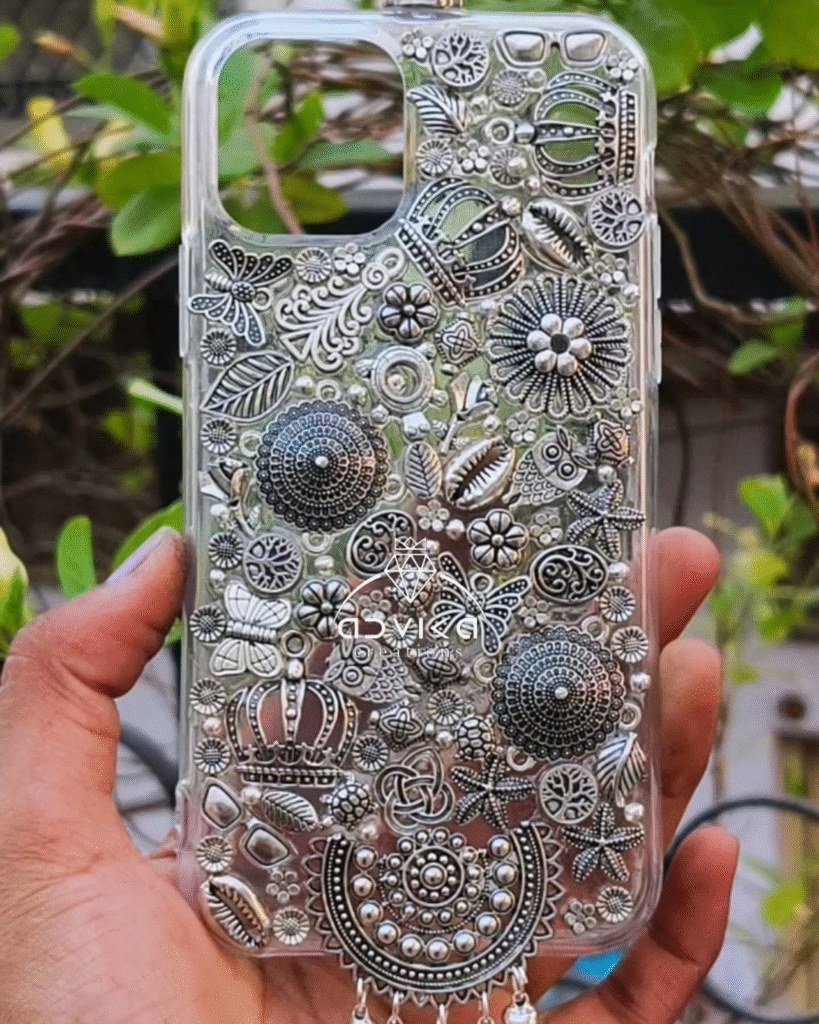
History of Dokra Craft
🌿 Ancient Origins: The Birth of Lost-Wax Tradition
- Over 4,000 years old: Dokra craft is one of the oldest known metal casting techniques, practiced in India since the Indus Valley Civilization.
- The Dancing Girl of Mohenjo-Daro: This famous bronze figurine is considered one of the earliest examples of the lost-wax method, which later evolved into Dokra.
- The word “Dokra”: Derived from the name of a nomadic community of metalworkers who traveled across Bengal, Odisha, Chhattisgarh, and Madhya Pradesh.
🛕 Spread Across Regions
- Bastar in Chhattisgarh: Became one of the main hubs of Dokra craft, where tribal artisans preserved this art form as part of their cultural identity.
- West Bengal, Odisha, and Jharkhand: Also known for Dokra clusters, each region adding its own style and motifs.
- Nomadic craftsmen: Spread the knowledge of this craft as they moved, allowing Dokra to flourish in different states of India.
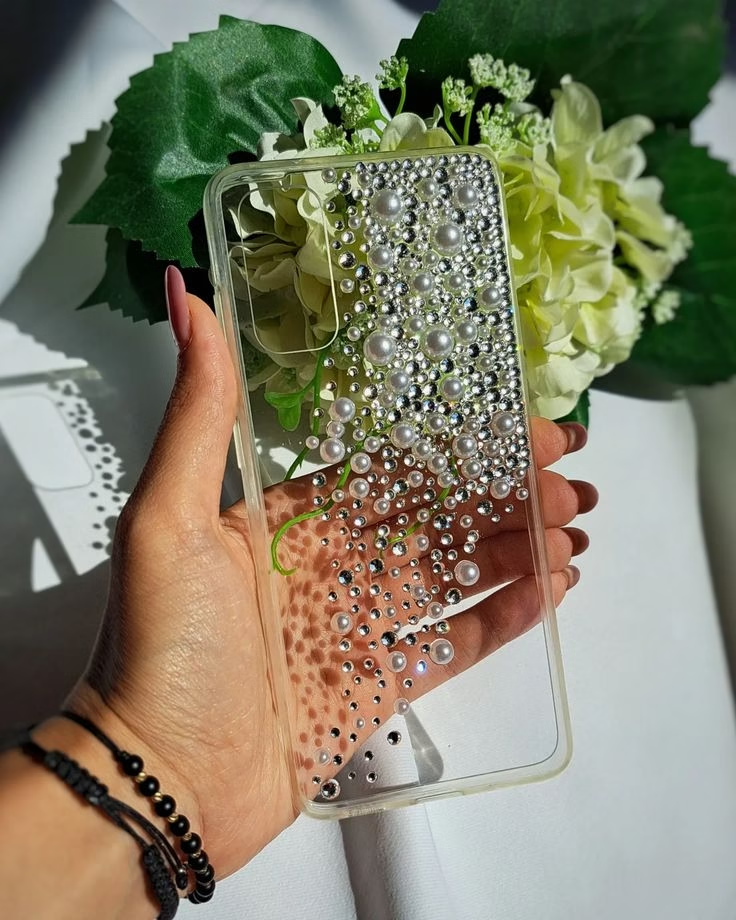
🔥 The Lost-Wax Technique: A Timeless Practice
- Cire Perdue method: The French term “cire perdue” (lost wax) describes the exact process Dokra artisans have used for centuries.
- Wax models: Earlier artisans used bee wax mixed with resin to create models, which were then covered with clay and baked.
- Molten metal filling: Brass and bronze replaced the wax, giving the final metal shape.
- Continuity: The same method is still in use today, passed down through generations without major changes.
🎭 Cultural Significance in Ancient Times
- Objects of worship: In tribal societies, Dokra pieces such as figurines of deities, ritual lamps, and animal motifs were used in festivals and rituals.
- Utility with beauty: Along with religious artifacts, artisans also made household objects like containers, measuring bowls, and ornaments.
- Symbol of wealth: Owning Dokra items once symbolized status, as metal casting was a skillful and valuable craft.
📜 Transition into Folk and Decorative Art
- Shift from utility to décor: Over time, the focus moved from purely functional items to decorative figurines and jewelry.
- Narrating stories: Motifs of local folklore, tribal legends, and nature (birds, elephants, trees) became common in designs.
- Colonial period impact: The craft suffered decline under colonial industrialization but survived through rural artisans’ dedication.
🌍 Revival in Modern Times
- 20th-century rediscovery: With rising interest in handicrafts, Indian governments and NGOs promoted Dokra through craft fairs and exhibitions.
- Global appreciation: Today, Dokra is admired worldwide for its rustic, antique finish and handmade uniqueness.
- Contemporary adaptation: Artisans are experimenting with new formats like jewelry, home décor, and now—mobile charms—to keep the craft alive in a modern context.
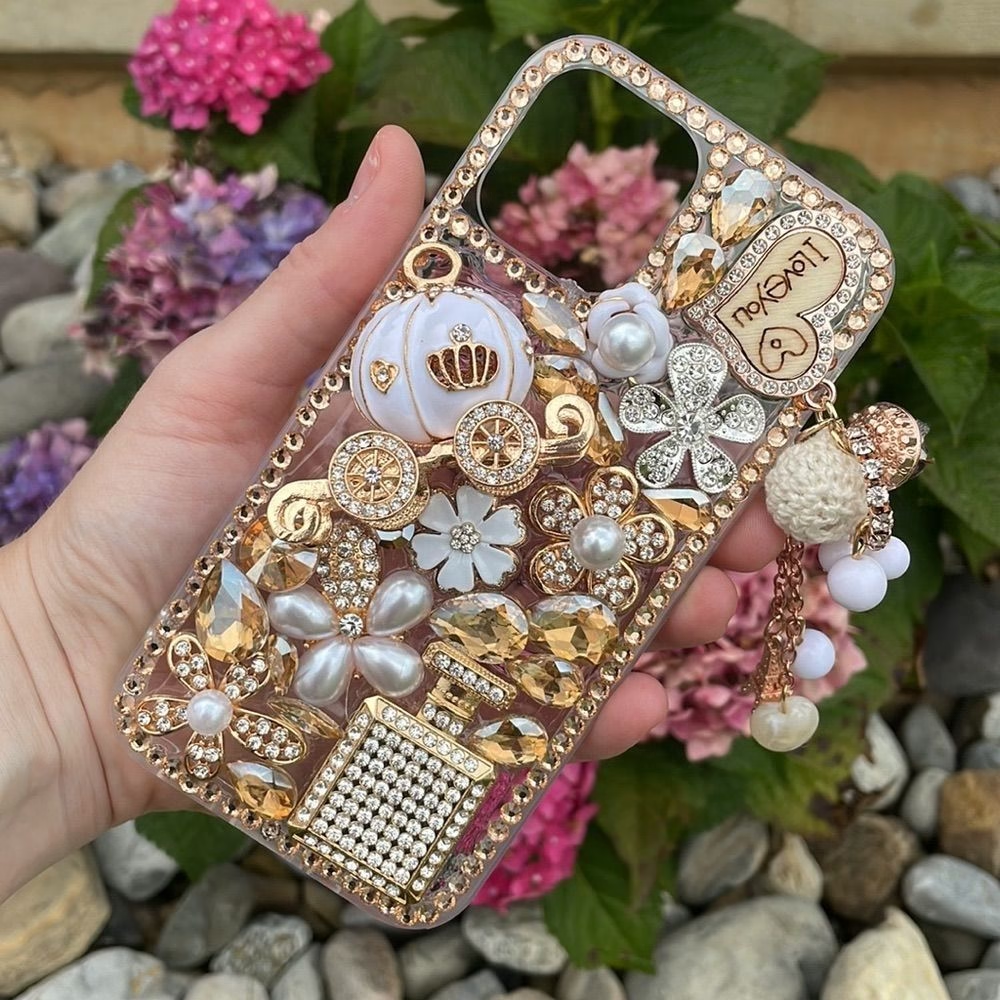
🛠 Materials Used in Dokra Craft
Dokra is made using the lost-wax casting technique, and though the art looks simple from outside, it needs a lot of natural and traditional materials. For mobile charms, the same process is followed but on a smaller scale, using lighter molds and finer wax designs.
1. Wax and Resin
- Beeswax: Collected from forests, it is the base for making the model.
- Dammar (natural resin): Mixed with wax to give strength and smooth finish.
- Nut oil: Sometimes added to keep wax flexible while shaping delicate motifs for charms.
2. Clay and Ash
- Clay from riverbanks: Used to coat the wax model. It must be sticky and fine-grained.
- Rice husk ash: Mixed with clay to allow heat resistance and porosity during firing.
- Termite hill clay: Often preferred because it naturally contains fine particles and minerals.
3. Metal Alloys
- Brass (Copper + Zinc): The primary metal, giving the charm its golden shine.
- Old brass scrap: Sometimes recycled utensils or wires are melted for casting small charms.
- Bronze (Copper + Tin): Occasionally used when a darker antique finish is desired.
4. Tools and Firing Essentials
- Hand tools: Small knives, sticks, and wooden presses for detailing the wax design.
- Furnace (Bhatti): A traditional earthen kiln for melting the metal.
- Tongs and ladles: For pouring molten metal carefully into the molds.
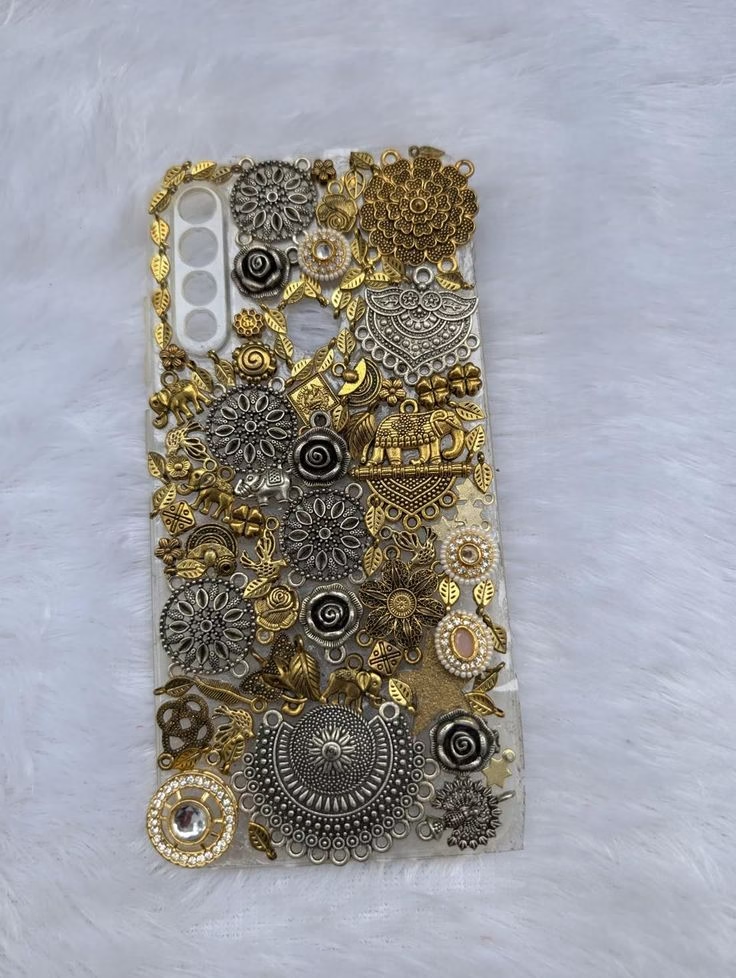
🔨 Steps of Making Dokra-Inspired Mobile Charms
Crafting even a tiny mobile charm requires patience and precision. Each step is as important as the next, because one mistake means starting all over again.
1. Designing the Wax Model
- The artisan begins by softening beeswax and mixing it with resin.
- Using hands and tiny tools, they shape the wax into miniature designs—like birds, tribal figurines, fish, or geometric motifs.
- Since mobile charms are small, this step requires extreme detailing, often done under natural light.
2. Applying Clay Coating
- The wax model is then coated with fine clay paste mixed with rice husk ash.
- After the first thin layer dries, several more layers are added, making the mold strong.
- For mobile charms, the mold remains small and light, so usually 3–4 layers are enough.
- Once dried, this clay mold completely covers the wax model.
3. Removing the Wax (Lost-Wax Process)
- The mold is heated in a simple oven or furnace.
- As the heat rises, the wax inside melts and drains out, leaving behind a hollow clay shell.
- This hollow space is the exact shape of the charm to be made.
4. Preparing and Pouring the Metal
- Brass or bronze is melted in a furnace until it turns into a glowing liquid.
- The molten metal is carefully poured into the hollow clay mold using ladles.
- It flows into every fine corner, taking the place of the melted wax.
5. Cooling and Breaking the Mold
- The mold is left to cool naturally, which solidifies the metal inside.
- Once cooled, the outer clay layers are gently broken with hammers.
- Inside emerges the raw metal charm, identical to the wax model originally made.
6. Polishing and Finishing Touches
- The charm is filed and polished to remove rough edges.
- For mobile charms, a small metal loop or ring is attached, so it can hang securely.
- Finally, artisans may use natural oils or polishing powders to give a smooth, glowing finish.
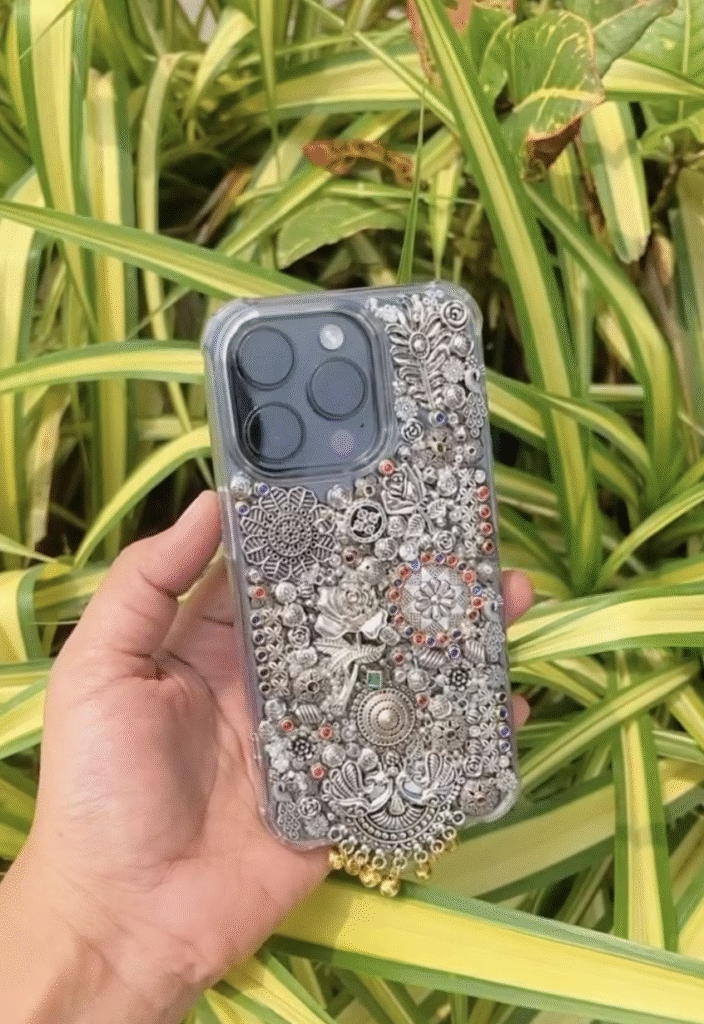
Symbols and Motifs in Dokra-Inspired Mobile Charms
Dokra craft is not just about metalwork—it is about stories told through symbols. When adapted into mobile charms, these motifs become little carriers of heritage, dangling from our devices as a daily reminder of tradition. Let’s dive into the motifs that make Dokra so captivating.
1. 🌞 Nature-Inspired Motifs: Echoes of Earth and Life
- Sun Motif
- Symbolizes energy, life, and positivity.
- Crafted in circular designs with radiating lines, perfect for charms that “brighten” everyday life.
- Represents a guiding force—ideal for something we carry everywhere like a phone.
- Symbolizes energy, life, and positivity.
- Leaf and Tree Motifs
- Leaves stand for renewal, growth, and connection to the Earth.
- Trees, often the “Tree of Life,” represent strength and rootedness.
- On mobile charms, they remind us to stay grounded even while moving fast in modern life.
- Leaves stand for renewal, growth, and connection to the Earth.
- Animal Motifs (Elephants, Turtles, Fish)
- Elephant: Strength, wisdom, and protection.
- Turtle: Longevity and patience.
- Fish: Fertility, luck, and prosperity.
- These creatures bring the spirit of Indian villages into small, wearable art.
- Elephant: Strength, wisdom, and protection.
2. 🎭 Human and Tribal Figures: Everyday Life in Metal
- Dancing Figures
- Show the joy and rhythm of rural festivals.
- On charms, they act as mini-reminders of happiness and movement.
- Show the joy and rhythm of rural festivals.
- Mother and Child
- Symbol of nurturing, love, and family ties.
- Fits beautifully as a motif for charms, offering warmth and emotional resonance.
- Symbol of nurturing, love, and family ties.
- Musicians and Hunters
- Represent cultural traditions and survival skills of tribal communities.
- Mobile charms with these motifs are like carrying stories of resilience and creativity.
- Represent cultural traditions and survival skills of tribal communities.
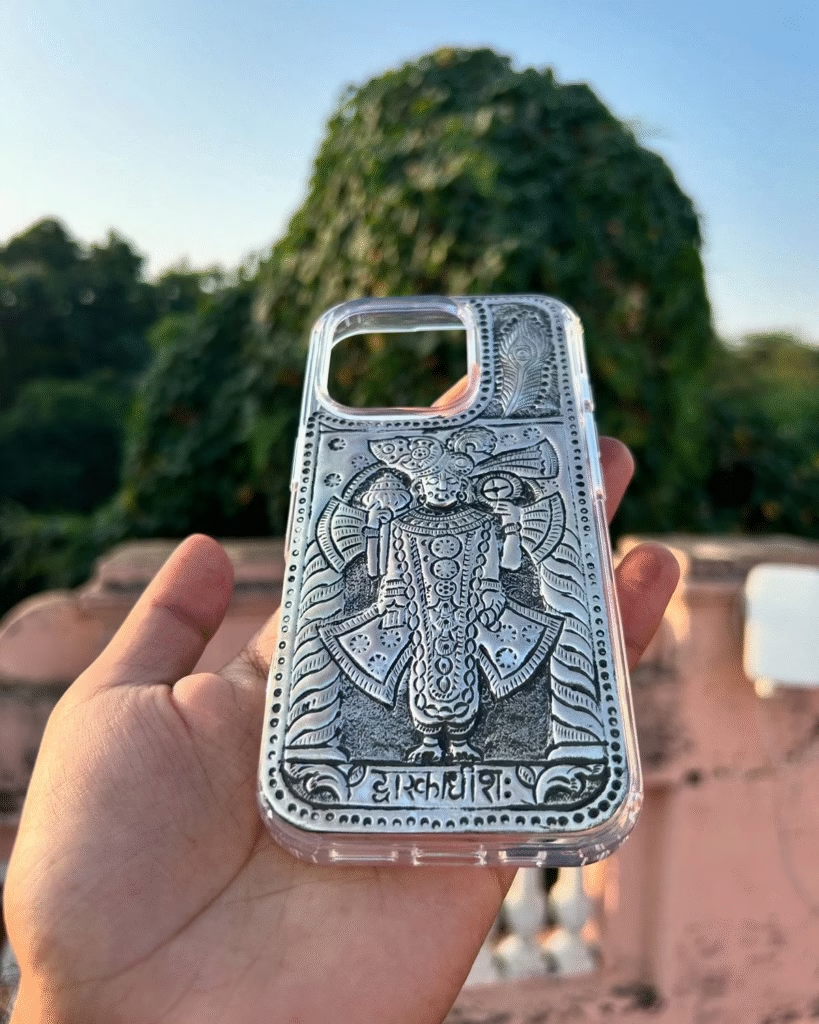
3. 🔱 Spiritual and Protective Motifs: Symbols with Deeper Meaning
- Trishul (Trident)
- Associated with Lord Shiva, symbolizing power and balance.
- In charms, it works as a protective emblem.
- Associated with Lord Shiva, symbolizing power and balance.
- Bell Motif
- Traditionally linked to temples and rituals.
- Suggests awakening, mindfulness, and a spiritual presence in daily routines.
- Traditionally linked to temples and rituals.
- Circle and Spiral Designs
- Circles represent wholeness and infinity.
- Spirals stand for continuity and cycles of life.
- Both are timeless symbols that blend seamlessly into the round shape of mobile charms.
- Circles represent wholeness and infinity.
4. 🌀 Geometric Patterns: Simplicity with Hidden Messages
- Triangles
- Stand for stability and direction.
- In many cultures, upward triangles mean masculinity, fire, or energy, while downward ones symbolize femininity and water.
- Stand for stability and direction.
- Squares and Grids
- Signify balance, order, and earthiness.
- Charms with square motifs feel structured and composed.
- Signify balance, order, and earthiness.
- Dots and Lines
- Minimal yet meaningful.
- Represent connections, journeys, and continuity—perfect for the mobile era.
- Minimal yet meaningful.
5. 🌺 Floral and Decorative Motifs: Beauty in Details
- Lotus Motif
- Sacred flower in Indian culture, symbolizing purity and rebirth.
- Lotus charms are both aesthetic and spiritual.
- Sacred flower in Indian culture, symbolizing purity and rebirth.
- Vine and Creeper Patterns
- Flowing lines that represent adaptability and endurance.
- Look graceful as they wrap around small charm surfaces.
- Flowing lines that represent adaptability and endurance.
- Petal and Bud Motifs
- Petals stand for blossoming potential.
- Buds remind us of growth yet to come—an optimistic design for everyday accessories.
- Petals stand for blossoming potential.
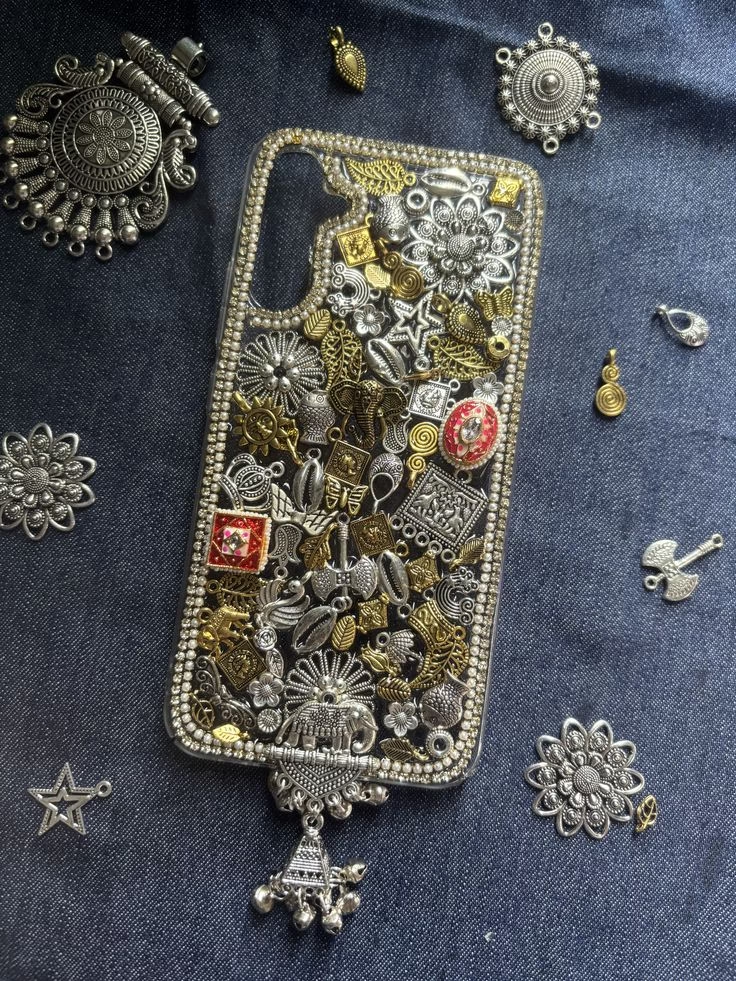
📊 Statistics and Cultural Significance of Dokra-Inspired Mobile Charms
Craft Spread in India
- Dokra art is mainly practiced in West Bengal, Odisha, Jharkhand, and Chhattisgarh.
- Around 1,200–1,500 artisan families are engaged in Dokra craft across India.
Export and Market Demand
- According to recent handicraft export reports, India exports Dokra items worth ₹20–25 crore annually.
- The USA, UK, Germany, and France are the top importers, where people value handmade, eco-friendly items.
Rising Popularity in Fashion & Gifting
- About 40–50% of sales in exhibitions now come from smaller, affordable items like charms, keychains, and jewelry.
- Mobile charms in particular have found a niche among youth and professionals who like combining heritage with modern accessories.
Styling Tips: How to Use Your Dokra Mobile Charm
Dokra-Inspired Mobile Charms aren’t just beautiful—they’re a fun way to add personality and cultural flair to your everyday items. Here’s how to make the most of them:
- Attach to Your Phone: Loop the charm through your phone case or strap hole to give your device a unique, handcrafted look.
- Accessorize Your Bag: Clip it onto handbags, backpacks, or sling bags for a quirky, ethnic touch.
- Keychains & Zipper Pulls: Turn your Dokra charm into a stylish keychain or zipper accessory.
- Mix & Match: Combine multiple charms or colors for a boho or festive vibe.
- Gifting: A charm attached to a personalized note or small pouch makes a thoughtful, artistic gift.
With a little creativity, these tiny charms can enhance your style and showcase your love for traditional craftsmanship in a modern way.
Care & Maintenance Tips for Dokra Mobile Charms
Dokra Mobile Charms are delicate, handcrafted pieces made from metal alloys like brass or bell metal, so proper care is essential to keep them looking beautiful.
- Avoid Moisture: Keep charms away from water, perfumes, or sweat to prevent tarnishing or discoloration.
- Clean Gently: Use a soft, dry cloth to wipe the surface. Avoid harsh chemicals or abrasive cleaners.
- Store Safely: Keep them in a soft pouch or box to prevent scratches and bending.
- Handle with Care: Don’t pull or tug aggressively on the charm, as delicate metal detailing can bend or break.
- Polish Occasionally: Use a mild metal polish if needed, but test on a small area first to preserve the handcrafted texture.
With these simple steps, your Dokra Mobile Charms can remain shiny, detailed, and long-lasting, maintaining their ethnic charm and uniqueness.
Wrapping-Up
Dokra-inspired mobile charms prove that art is never confined to museums or galleries—it can live right in our daily lives.What once adorned tribal households now swings gracefully from our phones, reminding us of India’s rich heritage with every glance.
These tiny charms are not just decorative; they are storytellers in metal, carrying centuries-old traditions into a fast-paced digital world.
By choosing them, we don’t just accessorize—we preserve, celebrate, and pass on a legacy of craftsmanship. Truly, Dokra mobile charms make culture both personal and portable.
Also Read:- Ecological Painting: Redefining Art in Harmony with Nature

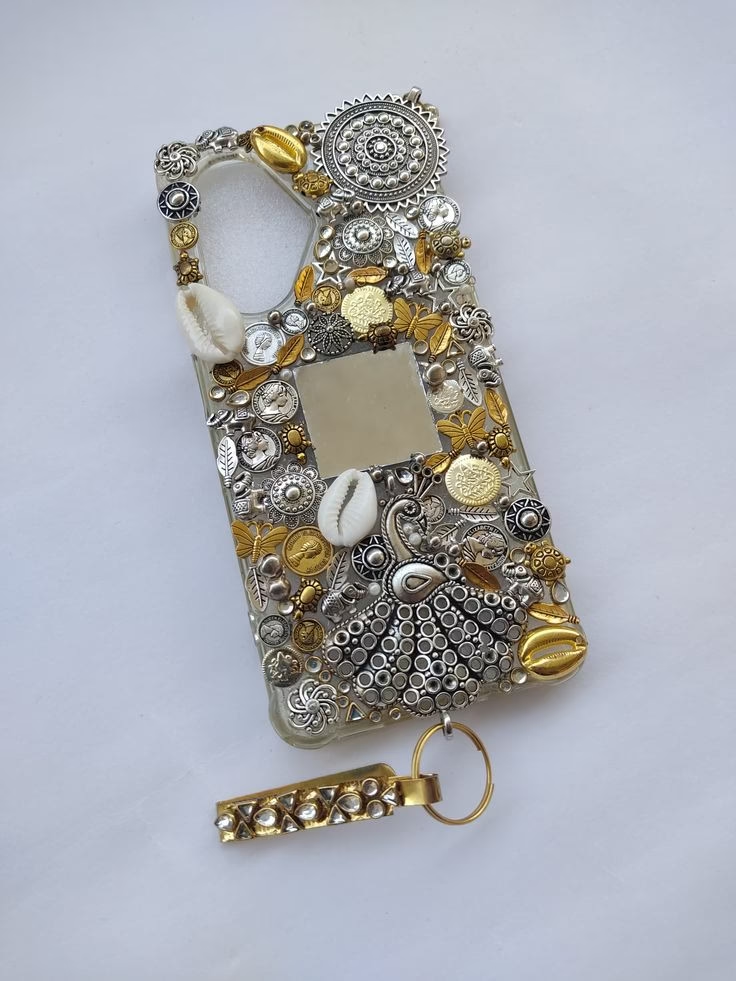
Leave a Reply